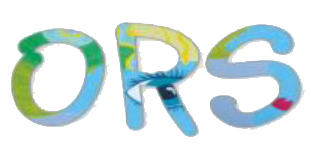Gleichwertige Feststellung
von Schülerleistungen (GFS)
Ein Nachweis zur „Gleichwertigen Feststellung von Schülerleistungen“ (GFS) müssen von allen Schülern in der 8. und 9. Klasse geleistet werden. Das Fach, in dem die Leistung erbracht wird, suchen sich die Schüler selber aus.
1. Regeln für das Verfassen und die Gestaltung einer schriftlichen Arbeit
Grundsätze
- Übersichtlichkeit
- Sauberkeit
- Richtigkeit und Genauigkeit der Sprache, Überprüfung von Rechtschreibung, Grammatik und Ausdruck.
- Zur Sicherheit immer doppelt speichern (z.B. auf Festplatte und USB – Stick).
- Gehe mit Hervorhebungen wie Fett- und Kursivdruck sowie mit der Verwendung verschiedener Schriftarten sparsam um. Ganz nach dem Motto: Weniger ist mehr!
Allgemeines
| Format Rand Zeilenabstand Schriftart Schriftgröße Formatierung Aufbau | DIN A4 links und rechts 3 cm, oben und unten 2 cm 1,5 geeignet sind Arial und Tahoma 12 linksbündig oder Blocksatz Deckblatt Inhaltsverzeichnis Textteil (Umfang in Absprache mit der Fachkraft) Quellenverzeichnis Selbstständigkeitserklärung |
Das Produkt deiner Überlegungen wird in einem sauberen Schnellhefter abgegeben!
Aufbau
Deckblatt:
Folgende Angaben müssen enthalten sein:
– Schule
– Fach
– Thema
– VerfasserIn
– Klasse
– Schuljahr
– eingereicht bei (beurteilende Lehrkraft)
– Ort
– Abgabetermin
Inhaltsverzeichnis:
– nummeriert mit Seitenangaben
Textteil:
► Überschriften und Seitenzahlen müssen mit dem Inhaltsverzeichnis übereinstimmen
► Der Eigenanteil, in dem du z. B. Gelesenes zusammenfasst, muss den Anteil der Zitate deutlich übersteigen. Wörtliche Zitate sind wie bei den Informationen zu Quellenangaben und Zitaten beschrieben zu kennzeichnen.
► Achte darauf, dass der „rote Faden“ in deiner Arbeit deutlich wird.
► Evtl Einfügen von Bildern, Grafiken und/oder Tabellen (Beschriften und Erläutern nicht vergessen!)
Quellenverzeichnis:
Alle Quellen, in denen du dich informiert hast, müssen in alphabetischer Reihenfolge angegeben werden:
► bei Büchern: Nachname, Vorname des Verfassers, Titel, Verlag, Erscheinungsjahr mit Auflage
Beispiel:
– Berger, Ulrike: Die Wasserwerkstatt. Spannende Experimente rund um Eis und Wasser. Oz – Verlag, 1. Auflage 2004
– Umwelt: Biologie 7/8 Baden Württemberg. Klett – Verlag, 1.Auflage 1999.
► bei Broschüren: Herausgeber, Titel, Erscheinungsjahr mit Auflage
Beispiel:
– DAK (Deutsche Angestellten Krankenkasse), Fit – Food. Einfach richtig essen. Die Bausteine der gesunden Ernährung. 8 / 2006.
– aid (aid Infodienst Verbraucherschutz, Ernährung, Landwirtschaft e.V.); Fastfood. Essen auf die Schnelle. 2005
► bei Zeitschriften und Zeitungsartikeln: Nachname, Vorname des Autors, Titel des Aufsatzes in: Titel der Zeitung, Erscheinungsnummer und Datum.
Beispiel:
– Evers, Marco; Siegeszug der Erbkranken in Der Spiegel, 14/2004
– LKZ (Leonberger Kreiszeitung) Bakterien im Trinkwasser. Nr. 272 vom 23.11.2006
► beim Internet:
exakte Internetadresse mit Datum und außerden einen Ausdruck der verwendeten Internetseite
Beispiel:
https://www.flechten-im-ruhrgebiet.de/Bioindikation/Flechten_und_bioindikation.htm; 18.9.2004
Zitieren von Quellen
► Anführungszeichen kennzeichnen das „wörtliche Zitat“, also Stellen, die direkt übernommen werden.
► (…..) kennzeichnet, dass im Zitat etwas weggelassen wurde.
► Am Ende des Zitats folgt die Quellenangabe.
► Auch Bilder, Grafiken und Tabellen müssen mit Quellenangaben versehen sein!
Selbstständigkeitserklärung:
Ich versichere hiermit, dass ich die Arbeit selbstständig und nur mit den angegebenen Quellen und Hilfsmitteln angefertigt habe.
Ort, Datum, Unterschrift
2. Regeln für Präsentationen und Referate
Zeitlicher Umfang:
10 – 15 Minuten, nach Absprache mit dem Fachlehrer
Inhalt:
►Achte darauf nur vorzutragen, was du verstanden hast, Mitschüler und Lehrer können am Ende des Vortrags nachfragen.
►Der „rote Faden“ muss in deinem Vortrag deutlich werden.
Vortrag:
►Trage im Stehen vor, halte deine Hände unter Kontrolle.
►Unterstütze deinen Vortrag mit angemessener Gestik und Mimik
►Sprich anschaulich, laut und deutlich: Schau deine Zuhörer an, würze deinen Vortrag durch Beispiele und dosierten Humor.
►Trage frei vor, sprich nicht zu schnell, aber auch nicht einschläfernd.
►Kleine Pausen sind wichtig, damit die Zuhörer Zeit zum Mitdenken haben.
►Erkläre verwendete Fachbegriffe sofort.
►Das Auge hört mit: Erleichtere deinen Zuhörern die Aufmerksamkeit durch Bilder, typische Gegenstände,
Folien, Tafelbild, Plakate, Powerpoint… .
►Powerpoint ist Power und Point: die Effekte sollen den Inhalt unterstreichen, können
ihn aber nicht ersetzen. Sonst gilt bei der Bewertung: „zu viel Power, zu wenig Point“!
►Kreative Darbietungsformen bringen willkommene Abwechslung: denke z.B. an Dialoge,
Sketche, oder beziehe deine Zuhörer durch Fragen mit ein.
►Übe deinen Vortrag mehrfach zu Hause vor dem Spiegel
Hilfsmittel:
►Es muss keine schriftliche Ausarbeitung des kompletten Vortrags abgegeben werden.
►Moderationskarten dürfen nur Stichworte enthalten, keine kompletten Texte.
►Plakate, Folien, Tafelanschriebe übersichtlich gestalten, darum groß genug schreiben.
Downloads
